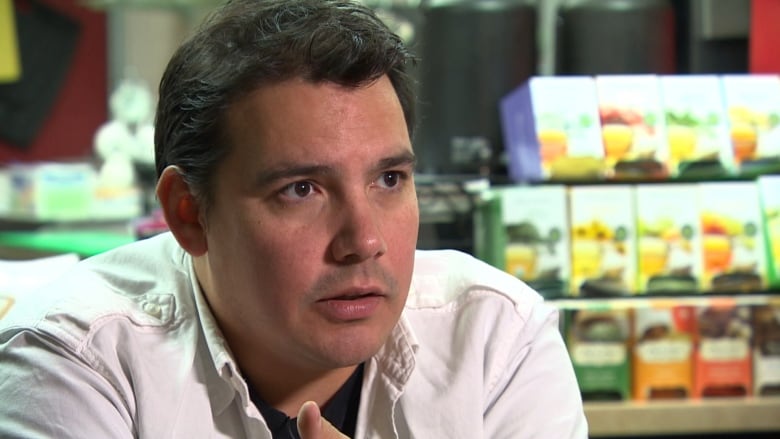Reconciliation more than land acknowledgments, Indigenous groups say
As more powerful groups — like Winnipeg Jets — make statements, critics worry it could become 'formality'

An increasing number of institutions across the country have started making verbal land acknowledgments to the Indigenous groups who traditionally occupied the territory.
Professors at Dalhousie University recognize that the Halifax institution sits on the ancestral territory of the Mi'kmaq, for instance. And the Winnipeg Jets announce that they play hockey on land formerly used by the Anishinaabe, Cree, Oji-Cree, Dakota, and Dene peoples, and the Metis Nation.
These brief reminders of Canada's colonial history, tucked into the routines of everyday life, are meant as small acts of reconciliation.
But Indigenous leaders stress that the more powerful the institution that makes the statement, the more important it is for it to be accompanied by concrete actions or it appears more as an empty gesture than a sign of respect.
Niigan Sinclair, assistant professor and head of University of Manitoba's native studies department, does outreach work across the country. At his suggestion, the Winnipeg Jets became the first NHL team to acknowledge the colonial history of their arena, making a commitment in October to announce the traditional landholders of the area at each home game.
"Making a land acknowledgment should be the most important thing Canadians do before starting any event," Sinclair says. "It is a fundamental analysis of who we are, where we're standing, and how we should proceed."
'Formality and a checklist process'
The practice has become customary for many arts spaces as well. Small theatres, including Toronto's Buddies in Bad Times, have been starting shows with territorial acknowledgments for years. In October, Tarragon, a bigger and more established Toronto theatre with an older client base, began making land acknowledgments after a request from Brian Solomon, an actor of Anishnaabe descent who appeared in one of their shows. The response has been overwhelmingly positive, says Tarragon's Natasha Parsons, who recites the acknowledgment before each show.
"It's becoming a lot more commonplace now, and the neighbourhood we're in, in particular, is quite rich in that history," she says. "We just thought it was the right thing to start doing."
As territorial acknowledgments begin to spread beyond event and arts spaces to bigger, more powerful institutions, critics worry that the practice will become a way to pay lip service to reconciliation without actually implementing change.
"It's becoming a formality and a checklist process," says Michael Etherington, cultural program manager at the Native Canadian Centre of Toronto.
- University of Winnipeg makes Indigenous studies mandatory
- Winnipeg Jets owners reverse stance, ban fake headdresses at games
He suggests fewer acknowledgments, but ones developed in consultation with Indigenous groups and accompanied by more historical and cultural context. "It's moving ahead faster than it should be. I think it has to be retracted a bit. Do we want to have a surface-level dialogue? Or do we want to get to the actual source of what we are advocating, as Indigenous peoples, towards truth and reconciliation?"
Toronto students hear message every morning
In September 2016, the Toronto District School Board began incorporating land acknowledgments into their morning announcements. Every day, along with the national anthem, students are reminded that "this school is situated on territories belonging to the Wendat, Anishinabek Nation, the Haudenosaunee Confederacy, the Mississaugas of the New Credit First Nations, and the Metis Nation."
- Indigenous lawyer offers a new perspective on Treaty One
- Indigenous Calgarians struggle to find their cultural identity
Duke Redbird, a community elder who suggested the change to the TDSB, says it's an especially important message as Canada's 150th anniversary celebrations approach. Canadians, particularly young people, should be reminded that "Canada began more than 150 years ago," he says. "The continent has been occupied for 12 to 15,000 years."
TDSB official Shari Schwartz-Maltz says the response from students has been unreservedly positive. "The territorial land acknowledgment has sparked an interest in the kids to investigate further what it all means. 'Where was our school so many years ago? What does land acknowledgment mean?' We've seen actual, tangible results from that."
Rev. Cecile Fausak has been working as Reconciliation and Indigenous Justice Animator for the United Church of Canada since 2005. That means reaching out to the Church's 2,500 congregations to begin "helping the church to grapple with its complicity."
- 'Little affinity between native spirituality and Christianity,' says pastor
- An aboriginal deacon explains why he embraces Christianity despite the church's history
Every service at her church in Athabasca, Alta., begins with a land acknowledgment, and it's printed in the church bulletin. Most congregants appreciate the effort, she says, although "for non-Indigenous people, it's often unsettling. But that needs to happen. It creates a sort of shift in perspective — well, why are we doing this? What does that mean? And that's a good path of questioning to embark upon."
To Etherington, the fact that land acknowledgments happen at all is a sign that more work needs to be done.
"I think if we get to the point where we have Indigenous and non-Indigenous peoples having meaningful relations, the land acknowledgment would not be necessary, because that respect would have been established."